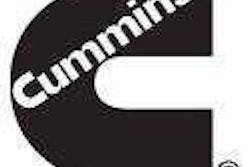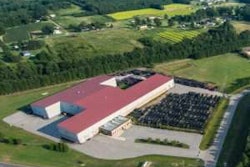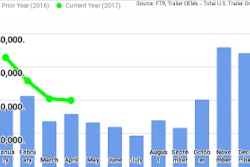 Please click the image above for a detailed look at each state’s adoption rate of new clean vehicle technology.
Please click the image above for a detailed look at each state’s adoption rate of new clean vehicle technology.According to new research released Thursday by the Diesel Technology Forum, introduction of new technology clean diesel truck engines equipped with advanced emissions control systems over the last five years is now at a 30 percent level, and has yielded significant emission reductions and substantial fuel savings.
“Almost 3 million heavy-duty diesel commercial vehicles introduced in the U.S. from 2011 through 2016 now on the road powered by the latest generation clean diesel engines, and these trucks have delivered important benefits in the form of cleaner air, fewer carbon dioxide emissions and dramatic fuel savings. Over a five-year period, the newest generation commercial vehicles have saved 4.2 billion gallons of diesel fuel, and reduced 43 million tonnes of carbon dioxide (CO2), 21 million tonnes of nitrogen oxides (NOx) and 1.2 million tonnes of particulate matter,” says Allen Schaeffer, executive director of the Diesel Technology Forum.
“Because diesel overwhelmingly dominates the heavy-duty truck sector and is also the number one power source for medium-duty vehicles, the transition to newer generations of clean diesel technology (2011 and later MY) is significant,” adds Schaeffer. “The 30 percent national average is up from just 25.7 percent last year. The research also estimated that significant further benefits would accrue to communities across the country if more of these newer generation clean diesel trucks enter into service.
According to Schaeffer, California, which with only 25 percent of trucks equipped with the latest generation clean diesel technology ranks near the bottom nationally, could see “substantial benefits” for an increasing rate of adoption of newer clean diesel technology trucks.
“If California were to achieve the same new technology penetration as Indiana (51 percent), it can eliminate another 200,000 tons of NOx and 11,000 tons of fine particles that would bring cleaner air faster to all California communities than any other strategies,” says Schaeffer.
The Diesel Technology Forum says its research released Thursday was conducted by IHS Markit, a global technical marketing research firm. State rankings data is based on Diesel Technology Forum analysis of IHS Markit vehicles in operation data representing Class 3-8 diesel trucks from Model Year 2011 through 2016 in all 50 states and the District of Columbia through Dec. 31, 2016.
“The U.S. trucking fleet is transitioning to newer clean diesel technology, which means immediate fuel savings, lower greenhouse gas emissions and cleaner air. This newest generation of clean diesel trucks have NOx emissions that are 99 percent lower than previous generations along with 98 percent fewer emissions of particulate matter, resulting in significant clean air benefits throughout the U.S.,” Schaeffer says. “Beginning in 2011, all heavy-duty diesel trucks sold had to meet NOx emissions of no more than 0.20 grams per brake horse-power hour (g/BHP-hr.). This is in addition to particulate emissions levels of no more than 0.01 grams per brake horse-power hour (g/HP-hr.) established in 2007.”
The Diesel Technology Forum says Indiana (51 percent), Utah (42 percent), and Oklahoma (42 percent), top the list of states with the most latest generation clean diesel technology vehicles, and the national average sits at 30 percent.
“In addition to these substantial societal benefits, a Class 8 tractor-trailer sized vehicle powered by the latest generation clean diesel engine will save the owner 960 gallons of fuel each year, relative to the previous generation of technology,” says Schaeffer. “When these benefits are compounded over the entire population of the clean diesel fleet, the 4.2 billion gallons of fuel saved between 2011 and 2016 is equivalent to almost 40 percent of the strategic petroleum reserve.”











